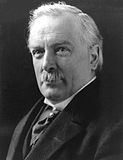1923 Inglaterran Election: Difference between revisions
No edit summary |
No edit summary |
||
| Line 116: | Line 116: | ||
=Voting and Enrollment= | =Voting and Enrollment= | ||
=Results= | =Results= | ||
{{Manala topics}} | |||
Latest revision as of 22:21, 18 December 2023
| |||||||||||||||||||||||||||||||||||||||||||||||||||||||||||||||||||||||||||
All 350 seats in the General Assembly 175 seats needed for a majority | |||||||||||||||||||||||||||||||||||||||||||||||||||||||||||||||||||||||||||
|---|---|---|---|---|---|---|---|---|---|---|---|---|---|---|---|---|---|---|---|---|---|---|---|---|---|---|---|---|---|---|---|---|---|---|---|---|---|---|---|---|---|---|---|---|---|---|---|---|---|---|---|---|---|---|---|---|---|---|---|---|---|---|---|---|---|---|---|---|---|---|---|---|---|---|---|
| Registered | 62,175,894 ( | ||||||||||||||||||||||||||||||||||||||||||||||||||||||||||||||||||||||||||
| Turnout | 48,621,549 (78.2%) ( | ||||||||||||||||||||||||||||||||||||||||||||||||||||||||||||||||||||||||||
| |||||||||||||||||||||||||||||||||||||||||||||||||||||||||||||||||||||||||||
| |||||||||||||||||||||||||||||||||||||||||||||||||||||||||||||||||||||||||||
The 1923 Inglaterran Election was held on Sunday, 27 May 1923. It was the fourth election since Inglaterra's independence in 1899. All 350 seats in the Inglaterran General Assembly were up for election in a proportional election with a minimum threshold of 5% to enter the Assembly.
The election saw the Confederalist hegemony, ruling as either the major partner of a coalition or as the sole governing party since 1899, end. The Social Republican Party, led by Jens Larsson took the most seats and formed a coalition with the Free Democratic Party, which had moved considerably leftward since 1917, led by Rovelter Hoffsetston. The official opposition was primarily made up of the rudderless Confederalist Party and right-wing Reform Movement, which had moved towards the right.
This was the first election in which women were allowed to vote, and so the number of registered voters and votes cast almost doubled for the 1923 election. Many women defected to the Social Republicans, helping contribute to its victory.
Future chancellor Adolphus Hiet entered politics in this election, winning as a member of the Confederalist Party.
Background
With the loss of a signfigant portion of supporters to the Reform Movement and Free Democrats, an unpopular leader in Leon Bitte, and increasingly aristocratic tendencies, the Confederalist Party was effectively left rudderless and drifting. A record 19 different candidates had tried to become leader of the party in its 1923 convention. While Bitte was reelected as leader, it was generally known that he would be a sacrificial lamb.
The Social Republicans, sensing opportunity, strove to find a new leader after the resignation of Gustaf Folke in 1921. The Social Republicans settled on Jens Larsson, who despite having opposed independence in 1899, had become a staunch civil advocate and a respected elder statesman. In addition, his admission of error in not supporting independence was well received and many felt that he was truly contrite. Larsson was nominated on the fourth ballot in the 1921 convention of the Social Republican Party.
Other parties kept their leaders, intending to see how they fared in an election outside of the context of war. Of note, the former People's Party, led by future dictator Karl Hoeven, was dissolved and became the Communist Party. Despite taking about half of the vote as the People's Party did in 1917, Hoeven's development of a fully communist party laid the groundwork for the rise of the communists during the 1920s and 30s.
The main issues dominating the election were economic ones, relating to the poverty, recession, and hyperinflation after the end of the First Great War. Historians now point to this economic situation as being a prime cause of the rise of Hoeven.




